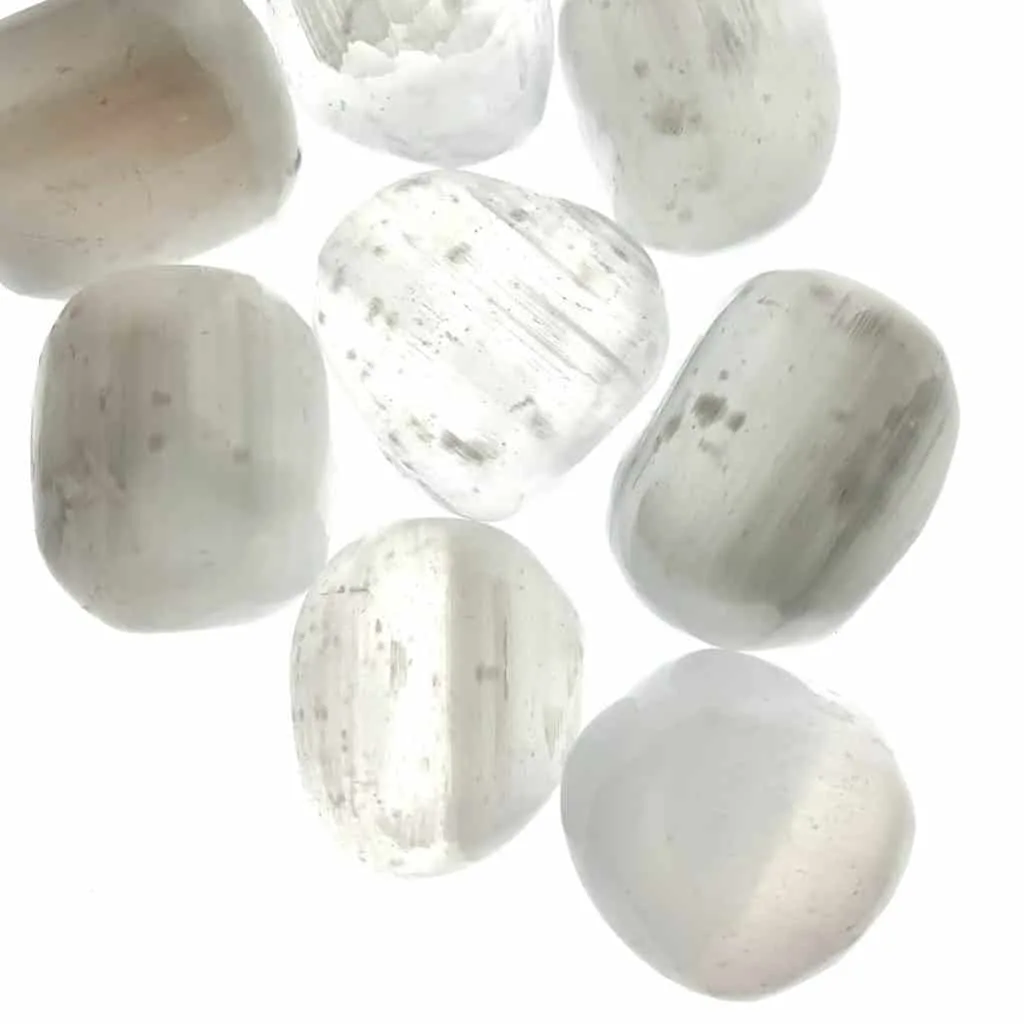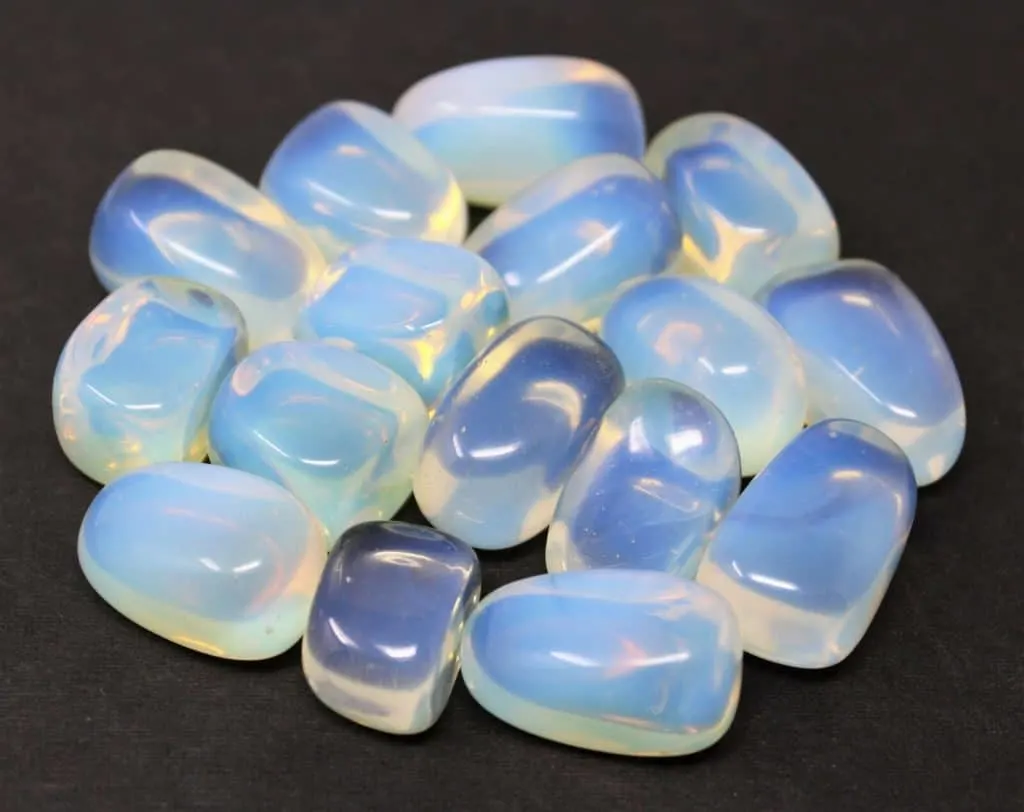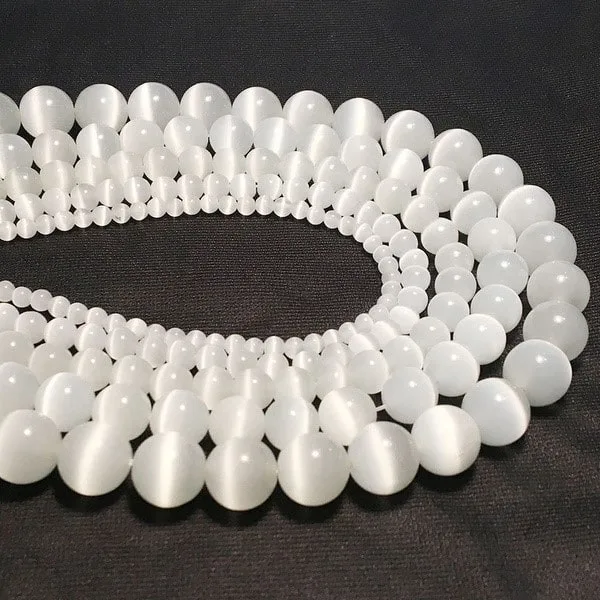As an Amazon Associate, I earn from qualifying purchases with no additional costs for you.
Selenite’s silky shimmer and mesmerizing glow make it a beloved mineral. But beware! With its popularity comes imitation. Don’t get fooled by fakes masquerading as the real deal. This article is your secret weapon. Learn five simple ways to spot genuine selenite and avoid those disappointing substitutes. With this knowledge, you’ll confidently uncover the authentic beauty of this captivating mineral.
A very simple hardness test will allow you to tell if selenite is real or fake. Selenite is a variety of gypsum, and its hardness is so low that you can scratch real selenite with your fingernail. Fake selenite is much harder, as it is usually represented by glass or plastic, which cannot be scratched by a fingernail.
The name “selenite” can be confusing. Some think it’s a moonstone, while others sell fake materials under the same name. This makes it tricky to spot the real deal. Let’s clear things up!

If you are interested in checking out the most beautiful real selenites, you can find them here (Amazon link) or here (fossilicious.com).
How to Tell if Selenite Is Real
Selenite is a transparent variety of gypsum. It’s a calcium sulfate dihydrate with the chemical formula (CaSO4·2H2O). It’s a very soft mineral, so if you have a well-formed crystal in your hand, the best way to distinguish it from similar-looking quartz or glass is to scratch or split a part of it with your fingernail.
You will see a small scratch on the surface of real selenite. Selenite or gypsum has a very small hardness (just 2 out of 10 on the Mohs scale). At the same time, quartz has 7! It’s impossible to do the same with quartz, glass, or plastic.
For polished or tumbled samples of selenite, it’s much more complicated to make a hardness test because sometimes the stone can be covered by lacquer, which cannot be scratched by a fingernail.
In such a situation check the second step to examine if your selenite is real or fake.
Because of its structure and chemical composition, selenite possesses very interesting thermal insulating properties. A real selenite stone will feel warm to the touch, while quartz and glass will be cold.
And the last tip to tell if the selenite is real is to look into its interior attentively. You will find tiny impurities of bedrock – the environment, where the selenite grew. It can be small particles of brownish-orange clay or sand or even black organic substances like bitumen or oil.


What does Real Selenite Look Like?
Selenite is a transparent variety of gypsum. It occurs in well-formed transparent or semi-opaque white, milky, yellow-white, gray, beige, or orange elongated crystals. Sometimes, tiny impurities of brown clay or sand are present, which is also a good sign that selenite is real.
There are also a few other varieties of gypsum. The first one is a satin spar—a silky, fibrous mineral composed of tiny needle-like elongated crystals of gypsum with a cat’s eye optical effect.
Selenite can display a moonstone effect in a polished state – a light-blue moon-like glow.
It’s wrong to call selenite a moonstone because a moonstone is completely another mineral. Moonstone is a feldspar group mineral (orthoclase and sodium-rich plagioclase (Na,K)AlSi3O8.
Both selenite and moonstone possess similar optical effects (pearly and opalescent schiller), however, it’s a huge mistake to name selenite a moonstone or vice versa.
Selenite also phonetically resembles the name of the chemical element Selenium (with the symbol Se), but there is no selenium in the selenite composition at all. Selenite is a mineral and Selenium as a chemical element are both named in honor of the Moon.
TIP: Speaking about the Moon, did you know you see rocks from the Moon on the Earth? Yes, the rocks were collected from the moon during lunar expeditions. Find out more about Moon rocks in the article below:
Moon Rocks: Everything You Need to Know About Them
How to Tell if Selenite Is Fake
Fake selenite can be represented by different materials. All of them look more or less like selenite. To distinguish natural selenite from a fake one it’s necessary to know fake mineral characteristic which is different from natural selenite.
- If you cannot scratch your selenite with your fingernail – it’s a fake (most probably quartz, glass, or plastic).
- If it feels cold to the touch, it’s most probably a fake, quartz or simple glass.
- If it feels warm but cannot scratch it with a fingernail – it’s a plastic fake.
A simple tip to ensure it’s plastic is to take a needle or pin, heat it above the fire (gas stove, candle, or lighter), and slowly touch the examined stone. Plastic will start to melt and produce an unpleasant smell, while selenite will not react.
- Does your selenite showcase a magical moonstone effect – flashes of light blue as you move it? It’s a great test, but here’s the secret: a genuine selenite won’t display this effect across its entire surface. Instead, look for a single, narrow stripe, white or light blue, that catches the light as you move the stone back and forth in one direction. If the whole stone seems to shimmer with blue flashes, that’s a dead giveaway – it’s most likely a fake!
- Real selenite is a product of nature, and nature loves a bit of character! Fake selenite often tries too hard to impress with an unnatural perfection. Be wary of completely clear and flawless stones, with no cracks, fractures, or even tiny mineral inclusions. This uniformity is a red flag – it hints at man-made materials like glass or plastic masquerading as the real deal. Remember, genuine selenite tells a story through its subtle imperfections, making it a more unique and captivating treasure.
- Real selenite’s beauty lies in its subtle elegance. But some fakes try to lure you in with colors that are simply too good to be true. Beware of selenite with super-saturated purples, blues, or reds. These unnaturally vivid hues are a dead giveaway for imposters! Nature’s palette for selenite leans towards softer, more calming tones.
What does Fake Selenite Look Like?
- Fake selenite in the form of tumbling commonly looks like a transparent or translucent white or honey-yellowish mineral.
- Sometimes, fake selenite can show unusually bright natural selenite colors (like vivid yellow, red, or purple).
- Fake selenite can be easily misinterpreted with glass, quartz, or plastic.
- Fake selenite usually has an attractive and even moonstone effect (billowy, moonlight-like sheen) on the surface. It has an absolutely clean interior, so no impurities can be detected inside the stone. Fake selenite is very hard (cannot be scratched by a fingernail) and cold.
- Sometimes, fake selenite even shows a rainbow effect on the surface. So you can observe all the rainbow colors play.
TIP: Real labradorite has such a unique play-of-color phenomenon that can be hardly copied in fake labradorites. Find out more in the article below:
Real vs. Fake Labradorite: Focus on These 8 Differences
Real vs. Fake Selenite: The Main Differences
Here is the table of main differences between real selenite from fake.
| Characteristic feature | Real selenite | Fake selenite |
|---|---|---|
| Hardness | 2 on the Mohs scale, so can be scratched by a fingernail | Cannot be scratched by a fingernail In case fake selenite is plastic: can be scratched by a knife In case fake selenite is glass: cannot be scratched by a knife but can be scratched by another piece of glass In case fake selenite is quartz: cannot be scratched nether by a knife or piece of glass |
| Warm/cold feel to the touch | Warm feel to the touch | Warm to the touch in case fake selenite is plastic Cold to the touch in case fake selenite is quartz or glass |
| Moonstone effect | The moonstone effect was observed on the whole surface and looked like spots rather than stripes. | Moonstone effect observed on the whole surface and looks like spots rather than a stripe. |
| Colors of moonstone effect | The moonstone effect is represented by a silky or narrow white sheen, which moves in one direction. | The moonstone effect was observed on the whole surface and looked like spots rather than a stripe. |
| Impurities | Tiny dots of orange-brown clay, or sand | No impurities and the material is flawless |
TIP: One of the most common ways to recognize real and fake selenite is to test Mohs hardness. Check out the best Mohs scale test kits in the article below:
3 Best Mohs Scale Test Kits: Test Hardness of Your Gemstones
Where to Buy Real Selenite
While selenite is a relatively common mineral, the thrill of finding a truly stunning piece never gets old! And when it comes to unearthing the most exquisite natural selenite, there’s no substitute for the experience of a Mineral Show or Fair. These events are treasure troves for gem enthusiasts, overflowing with selenite in all its glory.
The biggest one is the Tucson Gem and Mineral Show in the United States and the Munich Show in Europe held once a year. It’s a brilliant opportunity to buy mineral directly from the person who found it and know its locality.
Amazon (Amazon link) and Etsy are also quite good sources to buy selenite in their raw or carved appearance. In case you would like to explore some exotic samples of real selenite for mineral collection – The Arkenstone is noteworthy.
BTW: Do you want to know more about rock and mineral identification? The books listed below are the best ones you can find on the internet (Amazon links):
- Smithsonian Handbooks: Rocks & Minerals
- Gemstone & Crystal Properties (Quick Study Home)
- Ultimate Explorer Field Guide: Rocks and Minerals (National Geographic Kids)
Conclusion
With its ethereal glow and silky shimmer, selenite is a true wonder of the mineral world. It’s no surprise this variety of gypsum is so adored. But beware! Clever fakes try to mimic its captivating beauty. Fear not, for I’ll share the secrets of spotting genuine selenite and avoiding those disappointing imitations. Let’s dive into the key signs that reveal the true nature of a “selenite” specimen:
- Selenite is a very soft mineral. In the form of crystals, it can be scratched by a fingernail.
- Because of its natural thermal insulation properties, it feels warm to the touch.
- Natural selenite can have some imperfections, such as tiny clay of sand inclusions, which are the same as fingerprints unique to each specimen.
- Real selenite has pearly colors. It means that bright and saturated yellow, purple or blue-colored stone is fake.
- Selenite is highly praised for its moonstone optical effect, but spots covering the whole surface are a sign of a fake. Selenite will have a whitish line that moves in one direction back and forth.
TIP: Selenite impresses people with its gentle sheen and pleasant chatoyancy. In addition, selenite commands affordable prices because it is readily available in good quality. Find out more in the article below:
Selenite Value: Main Factors & Prices for Different Units


